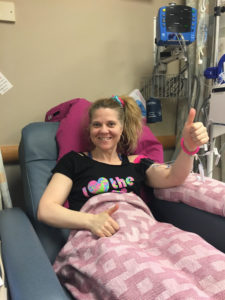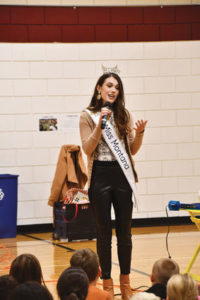Melanoma by the State: Montana


Dubbed “Big Sky Country,” Montana is the fourth largest state in total landmass, comprising vast rolling prairie land in the east and rugged Rocky Mountain peaks in the west. Yet, despite its large geographic size and land diversity, Montana has only about one million residents, making it the 44th most populous state. In terms of melanoma, it is 12th among U.S. states for new melanoma diagnoses, with 27.4 cases per 100,000 people, according to the latest data available from the U.S. Centers for Disease Control and Prevention. According to the most recent data available, melanoma is the fifth most common type of cancer in Montana. In 2019, it is estimated 390 Montanans will be diagnosed with the disease.
Why is the Melanoma Rate So High in Montana?
Eighty-nine percent of the state’s residents are white, according to the latest U.S. Census Bureau estimates. “German is the largest ancestral group, followed by Irish and English, and agriculture is a way of life for many Montana residents, which put them at a higher risk of developing melanoma,” states Karrie Fairbrother, a Nurse Educator in Great Falls, Montana.
Prevention and Awareness Efforts
Montanans are taking melanoma seriously and looking for ways to reduce the incidence of the disease in their state. Karrie Fairbrother is helping to lead that effort. In 1987, Karrie’s husband was diagnosed with melanoma. For the next few years, her husband received treatment at a handful of medical centers. “As we sat in waiting rooms surrounded by other terrified melanoma families, I was struck by how little anyone knew about prevention and early detection of the disease,” says Karrie. “Since then, my mission has been to ‘be the difference.’ I now use every opportunity to raise awareness and prevent future cases.” Karrie shares her knowledge in communities throughout the state while handing out sunscreen. She also works with the Montana Public Health Department, the Montana Cancer Control Program, dermatologists, oncologists, and Mo Shea, Miss Montana 2019, to reduce the incidence of melanoma.

Karrie Fairbrother with Montana Lt Governor Mike Cooney
As part of the effort to prevent and control cancer in the state, the Montana Comprehensive Control Plan 2016-2021 identified two objectives to address the incidence of melanoma. One objective is to “reduce the proportion of adolescents who use artificial sources of ultraviolet light for tanning” by advocating for policy to prohibit the use of tanning beds for minors. Strategies also call for strengthening existing regulations around warnings and sign consent forms, as well as conducting media campaigns to educate on the dangers of these devices. A second objective is to “increase the number of statewide, regional, and tribal organizations that implement sun safety practices” by determining how many professional organizations have outdoor activities and distributing educational materials, encouraging compliance with existing sun safety practices at outdoor worksites, and promoting sun safety policy and environmental changes where outdoor activities occur.
Carroll College and the University of Montana are working with the National Council on Skin Cancer Prevention and the Skin Smart Campus Initiative, each having met the requirements to be designated as a certified Skin Smart Campus. Both Carroll College and the University of Montana are committed to keeping indoor tanning devices out of their campuses and affiliated buildings, as well as educating their student population about sun safety and the dangers of tanning devices. Carroll College took the extra step of becoming the first campus with Skin Smart Interns. These interns will be ambassadors for the program and add great leadership for Carroll students.

City of Helena Proclamation – “Don’t Fry Day”
St Peter’s Health and Lewis and Clark Public Health are also taking action. With the help of numerous volunteers and a grant provided by the Montana Cancer Control Coalition, parents are provided a sun hat for their newborn and are educated about the importance of baby sun care.
Mo Shea, Miss Montana 2019, knows too well the importance of raising awareness about skin cancer. When Mo was 15, her mother Kathy developed a basal cell carcinoma. Knowing her Irish heritage, fair skin, and family history put her at a higher risk of developing a skin cancer, Mo chose skin cancer awareness as her platform when she was Miss Montana Outstanding Teen. It was then that she teamed up with Karrie Fairbrother and the Montana Cancer Coalition to raise awareness. When Mo was recently crowned Miss Montana 2019, she instantly knew what her platform would be: “Love the Skin You’re In: Skin Cancer Prevention.”

Miss Montana, Mo Shea’s platform is, “Love the Skin You’re In: Skin Cancer Prevention.” For first, second and third graders, Shea focuses on teaching them about sun safety. (Photo by Nicole Lucina)
As part of her Crown to Classroom tour, Mo gives presentations on sun safety prevention. “We are a very outdoor heavy state which increases Montanans’ risk of developing melanoma and other skin cancers. It is why I feel it is so important to instill healthy habits in our youth,” says Mo. She hopes to reach 30,000 K-12 graders during her year of service. Along with Karrie, the Montana Cancer Coalition, and others, Mo is also educating Montana state legislators on the need to pass legislation that protects all minors under 18 from the dangers of indoor tanning devices.
Currently, in Montana there are no restrictions on a minor’s use of indoor tanning devices. Over the last several years, AIM at Melanoma and a coalition of Montana stakeholders have been pushing for legislation that would ban minors under the age of 18 from these devices.
Despite legislation having not yet passed, efforts to raise awareness about the dangers of tanning devices are paying off. According to the 2019 Montana Youth Risk Behavior Survey, 6.2 percent of high school students used an indoor tanning device such as a sunlamp, sunbed, or tanning booth one or more times during the past 12 months. This percentage is a marked decrease from six years ago when 13.4 percent of high school students reported using a tanning device at least once in the past 12 months.
If you are interested in getting involved in the effort to protect minors from these devices—in Montana or any other state—please email Samantha Guild, Director of Education, Public Policy, and Advocacy for AIM at Melanoma.
Recent Posts

Update on the State of Vaccines for Melanoma

Healing Through Creativity: Art Therapy in Cancer Care

Side Effect Central: Lichen Planus Explained

Behavioral Addiction Responsible for Excessive Indoor Tanning


